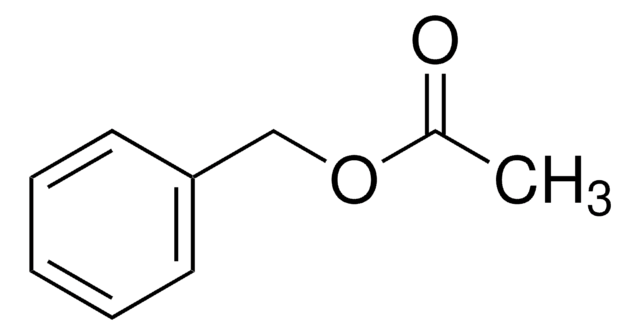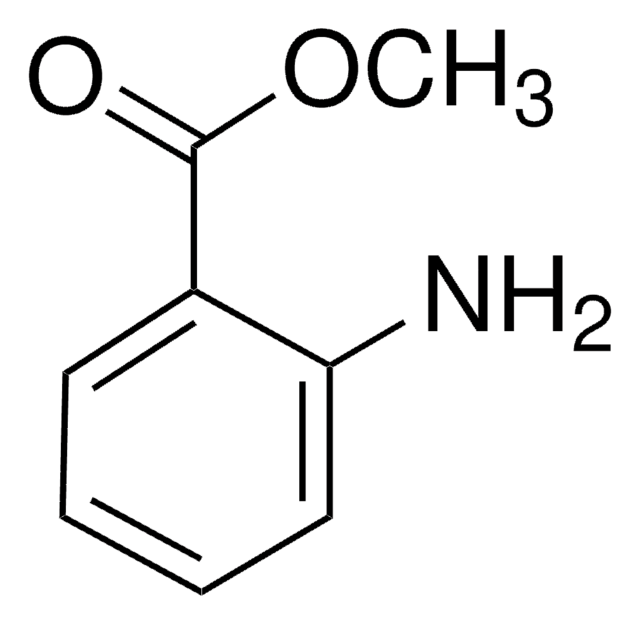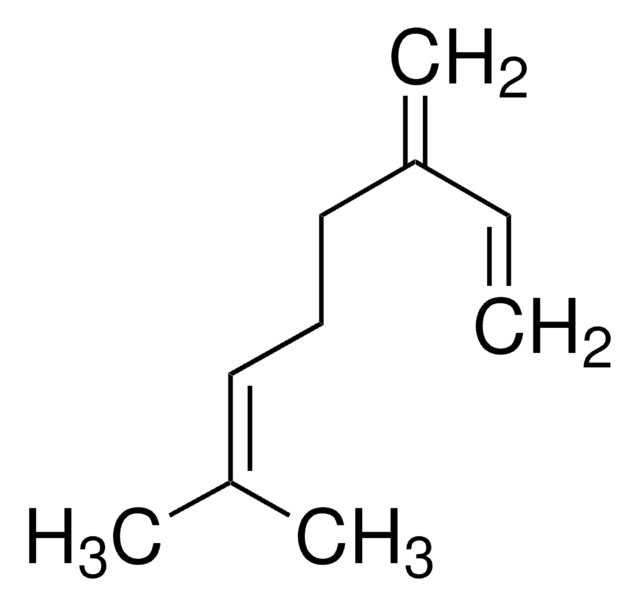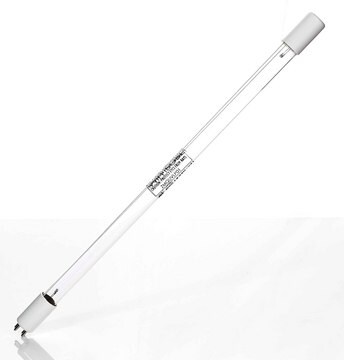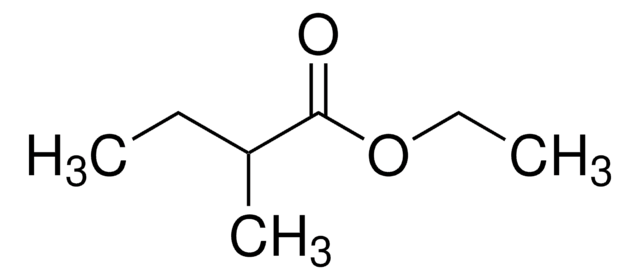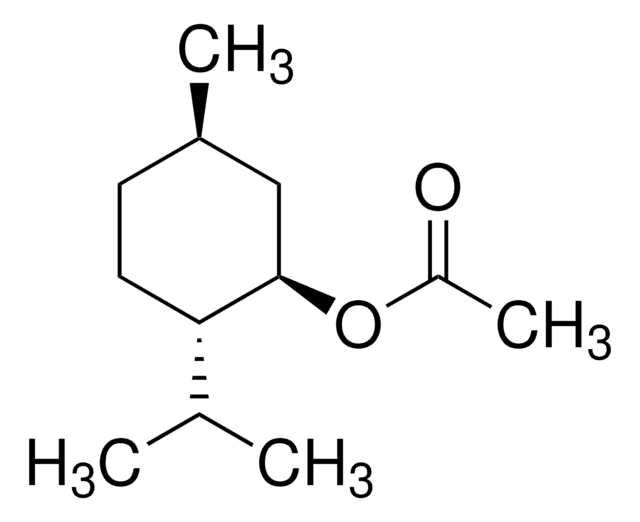Kluczowe dokumenty
W213500
Benzyl acetate
≥99%, FCC, FG
Synonim(y):
Benzyl ethanoate, Acetic acid benzyl ester
About This Item
Polecane produkty
pochodzenie biologiczne
synthetic
Poziom jakości
klasa czystości
FG
Halal
Kosher
agency
meets purity specifications of JECFA
zgodność regionalna
EU Regulation 1334/2008 & 178/2002
FCC
FDA 21 CFR 117
FDA 21 CFR 172.515
ciśnienie pary
23 mmHg ( 110 °C)
Próba
≥99%
temp. samozapłonu
862 °F
współczynnik refrakcji
n20/D 1.502 (lit.)
bp
206 °C (lit.)
mp
−51 °C (lit.)
gęstość
1.054 g/mL at 25 °C (lit.)
Zastosowanie
flavors and fragrances
Dokumentacja
see Safety & Documentation for available documents
alergen pokarmowy
no known allergens
Organoleptyczne
floral; fruity; sweet
ciąg SMILES
CC(=O)OCc1ccccc1
InChI
1S/C9H10O2/c1-8(10)11-7-9-5-3-2-4-6-9/h2-6H,7H2,1H3
Klucz InChI
QUKGYYKBILRGFE-UHFFFAOYSA-N
Szukasz podobnych produktów? Odwiedź Przewodnik dotyczący porównywania produktów
Powiązane kategorie
Opis ogólny
Zastosowanie
- Transcriptomic and proteomic approaches to explore the differences in monoterpene and benzenoid biosynthesis between scented and unscented genotypes of wintersweet.: This study examines the biosynthesis pathways of monoterpenes and benzenoids, including benzyl acetate, in different genotypes of wintersweet. By using transcriptomic and proteomic methods, the researchers identified key genes and proteins involved in the production of these compounds, providing insights into the biochemical mechanisms underlying their biosynthesis. This research has implications for understanding the metabolic engineering of fragrance compounds in plants (Tian et al., 2019).
Zwroty wskazujące rodzaj zagrożenia
Zwroty wskazujące środki ostrożności
Klasyfikacja zagrożeń
Aquatic Chronic 3
Kod klasy składowania
10 - Combustible liquids
Klasa zagrożenia wodnego (WGK)
WGK 1
Temperatura zapłonu (°F)
203.0 °F - closed cup
Temperatura zapłonu (°C)
95 °C - closed cup
Środki ochrony indywidualnej
Eyeshields, Gloves, type ABEK (EN14387) respirator filter
Wybierz jedną z najnowszych wersji:
Masz już ten produkt?
Dokumenty związane z niedawno zakupionymi produktami zostały zamieszczone w Bibliotece dokumentów.
Klienci oglądali również te produkty
Global Trade Item Number
| SKU | GTIN |
|---|---|
| W213500-10KG | |
| W213500-1KG-K | 4061837543746 |
| W213500-25KG-K | 4061837543753 |
| W213500-10KG-K | 4061837543739 |
| W213500-1KG | |
| W213500-25KG | |
| W213500-SAMPLE | |
| W213500-SAMPLE-K | 4061837508455 |
Nasz zespół naukowców ma doświadczenie we wszystkich obszarach badań, w tym w naukach przyrodniczych, materiałoznawstwie, syntezie chemicznej, chromatografii, analityce i wielu innych dziedzinach.
Skontaktuj się z zespołem ds. pomocy technicznej